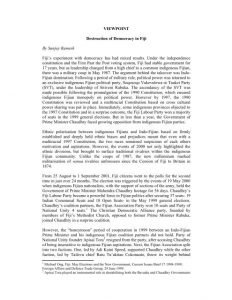By Bill Carey • For the Herald
* Originally posted in the Williamson Herald
Tennessee’s northern border shifts up and down many times on its long path from the Appalachian Mountains to the Mississippi River.
Near Land Between the Lakes, the border jumps north by a couple of miles, then shifts south, creating what some refer to as Tennessee’s “chimney.” The boundary then proceeds in a straight line all the way to the Mississippi River.
Why does it do this?
James Sames once wrote a book on the subject. It’s called “Four Steps West.” To summarize his findings: Tennessee’s border with Kentucky and Virginia is, for the eastern two-thirds of the Volunteer State, nowhere near where the original decree said it was supposed to be. The placement of the boundary was influenced by human error, surveying equipment, disagreements among surveyors and countless other reasons. As for the Tennessee-Kentucky border in West Tennessee, it is almost exactly where it was originally intended to be.
You see, in 1665, King Charles II of England decreed that the boundary between Virginia and North Carolina would be 36 degrees, 30 minutes north latitude. After Kentucky and Tennessee were carved out farther west, this boundary was extended all the way to the Mississippi River.
The official border was laid out by different people and in different eras, using celestial navigation readings to determine location on the Earth’s surface and magnetic compass headings to draw the line between places where celestial shots were made. These early surveyors left marks in trees to show where they left the boundary line. As the years passed, these marks were often destroyed or even mimicked by landowners, causing many cases of confusion and legal morass.
Most of the North Carolina/Virginia border was laid out in 1728. Twenty-one years later, surveyors Joshua Fry and Peter Jefferson (the father of President Thomas Jefferson) started where Byrd left off and made it to about 10 miles east of present-day Bristol.
In 1779, two teams of surveyors picked up where Fry and Jefferson had left off and drew the line all the way into where the Tennessee River flows north into Kentucky. Dr. Thomas Walker was one of these surveyors, which is why the line that these men laid out is still known as the “Walker line.”
As it turns out, all these early surveyors mistakenly placed the boundary a distance of five to 12 miles north. So, instead of the border between Kentucky/Virginia and Tennessee/North Carolina being at 36-30, it is actually closer to 36 degrees, 35 minutes in East Tennessee and as far north as 36-41 at Land Between the Lakes.
It is easy for us to be smug about these inaccuracies in an era in which we carry hand-held satellite navigation devices. But if you think it is easy to calculate your exact location on the planet using a hand-held sextant and a magnetic compass, you try it. (I used to navigate airplanes in the Navy using celestial navigation. Believe me, it isn’t easy!)
In 1817, the Chickasaw Indians “sold” the land between the Tennessee and Mississippi Rivers, and that land became West Tennessee. By this time, it had become obvious that Tennessee’s border with Kentucky and Virginia was north of where it was intended to be.
During the next couple of years, Tennessee and Kentucky argued over where the boundary should be drawn in this new area. Finally, in 1820, Kentucky agreed to leave the border east of the Tennessee River where it had been mistakenly placed, so long as the border in the newly claimed land west of the Tennessee River was surveyed at 36-30. This is why, today, the Tennessee/Kentucky border slides southward about 12 miles in the area of Land Between the Lakes.
Virginia remained perturbed about the location of the line for more than a century. The U.S. Supreme Court settled the matter in 1893, ruling in Tennessee’s favor that “a boundary line between states or provinces which has been run out, located, and marked upon the earth, and afterwards recognized and acquiesced in by the parties for a long course of years, is conclusive.”
In other words, if you agreed to live with a border for long enough, you forfeit the right to complain about it.
Bill Carey is the founder and executive director of Tennessee History for Kids (www.tnhistoryforkids.org).




















